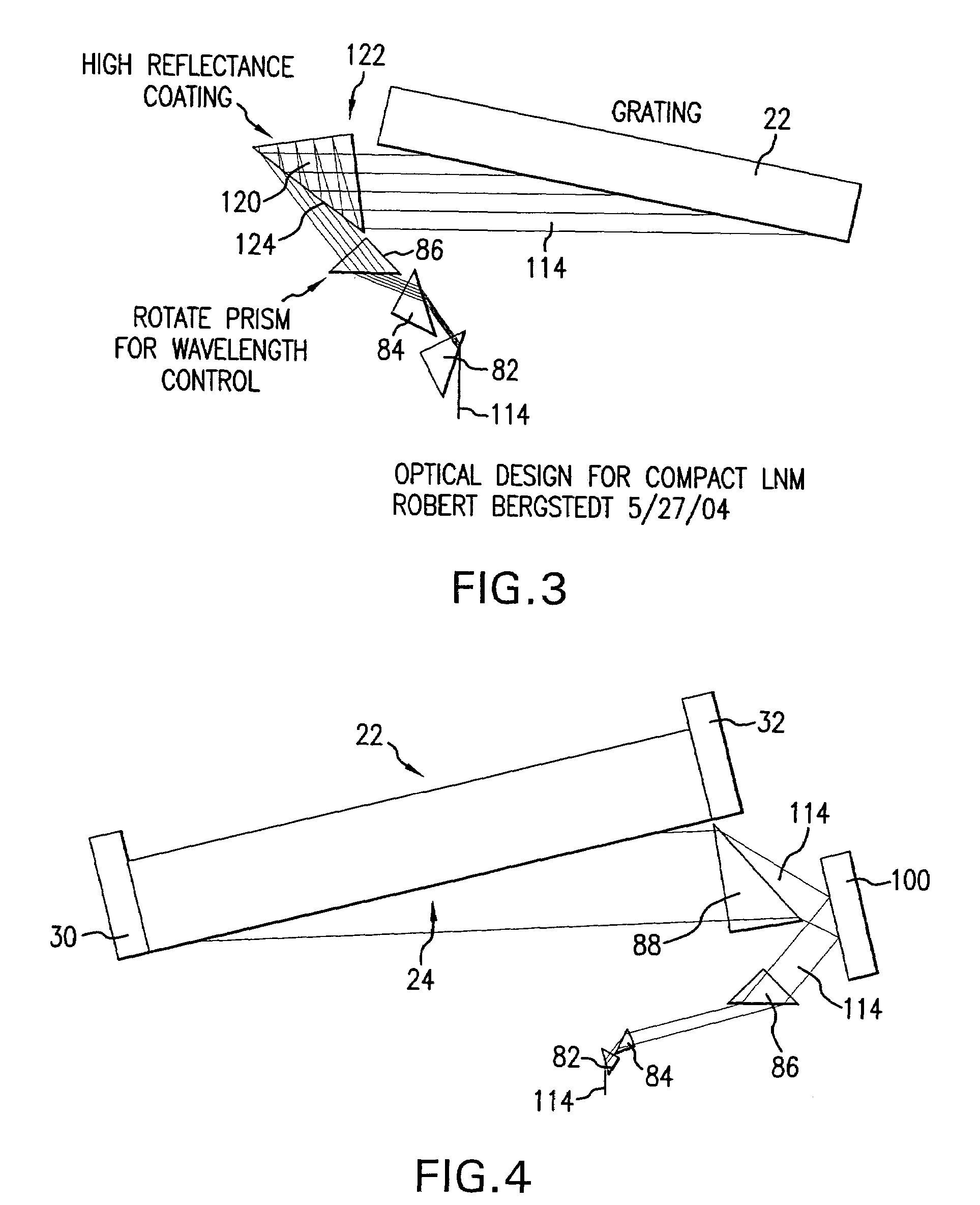Line narrowing module
a narrowing module and narrowing technology, applied in the direction of active medium materials, instruments, photomechanical devices, etc., can solve the problems of grating failure mode, arf grating failure mode appears faster, and rsub>max /sub>and equivalents have some limits
- Summary
- Abstract
- Description
- Claims
- Application Information
AI Technical Summary
Benefits of technology
Problems solved by technology
Method used
Image
Examples
Embodiment Construction
[0034]Turning now to FIG. 1 there is shown a top plan view of a prior art line narrowing module 28. according to aspects of the operation of the prior art line narrowing module of FIG. 1 the positioning of a dispersive center wavelength selection optical element, e.g., a grating 22 and its construction, e.g., its blaze angle, length, groove pitch, and angle of incidence of the laser light pulse beam on the grating (defining, e.g., a nominal optical path to and from the grating 22 within the optical path through the line narrowing module 28—into and out of the line narrowing module 28) etc., define an order of dispersion that will be reflected back along the nominal optical path at what angle and at what wavelength, e.g., 79° at 193.3 nm desired center wavelength. The grating 22 and its construction in and of themselves can be tuned, e.g., using the blaze angle, to maximize the efficiency of the line narrowing module 28, e.g., by selecting an order that contains the largest portion o...
PUM
 Login to View More
Login to View More Abstract
Description
Claims
Application Information
 Login to View More
Login to View More - R&D
- Intellectual Property
- Life Sciences
- Materials
- Tech Scout
- Unparalleled Data Quality
- Higher Quality Content
- 60% Fewer Hallucinations
Browse by: Latest US Patents, China's latest patents, Technical Efficacy Thesaurus, Application Domain, Technology Topic, Popular Technical Reports.
© 2025 PatSnap. All rights reserved.Legal|Privacy policy|Modern Slavery Act Transparency Statement|Sitemap|About US| Contact US: help@patsnap.com



